#Clethrionomys glareolus
Text

92 notes
·
View notes
Text


Bank vole (Clethrionomys glareolus)
25/02/20, North West England
3 notes
·
View notes
Text
In 2005 Paweł Koteja with Edyta Sadowska and colleagues from the Jagiellonian University (Poland) started a multidirectional selection on a non-laboratory rodent, the bank vole Myodes (= Clethrionomys) glareolus.[43] The voles are selected for three distinct traits, which played important roles in the adaptive radiation of terrestrial vertebrates: high maximum rate of aerobic metabolism, predatory propensity, and herbivorous capability. Aerobic lines are selected for the maximum rate of oxygen consumption achieved during swimming at 38°C; Predatory lines – for a short time to catch live crickets; Herbivorous lines – for capability to maintain body mass when fed a low-quality diet “diluted” with dried, powdered grass. Four replicate lines are maintained for each of the three selection directions and another four as unselected Controls.
After approximately 20 generations of selective breeding, voles from the Aerobic lines evolved a 60% higher swim-induced metabolic rate than voles from the unselected Control lines. Although the selection protocol does not impose a thermoregulatory burden, both the basal metabolic rate and thermogenic capacity increased in the Aerobic lines.[44][45] Thus, the results have provided some support for the “aerobic capacity model” for the evolution of endothermy in mammals.
More than 85% of the Predatory voles capture the crickets, compared to only about 15% of unselected Control voles, and they catch the crickets faster. The increased predatory behavior is associated with a more proactive coping style (“personality”).[46]
During the test with low-quality diet, the Herbivorous voles lose approximately 2 grams less mass (approximately 10% of the original body mass) than the Control ones. The Herbivorous voles have an altered composition of the bacterial microbiome in their caecum.[47] Thus, the selection has resulted in evolution of the entire holobiome, and the experiment may offer a laboratory model of hologenome evolution.
they are breeding supervoles in the labs. we need more of this. we need super wolves to eat the extra deer. and those pigs that are causing problems. make them hate the taste of human babies
34 notes
·
View notes
Text
photos of all the above in order! none of these are "true mice" genetically, they are not even murids-- just mouse-alikes! :)


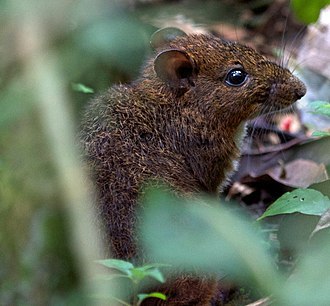
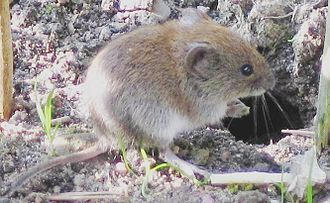



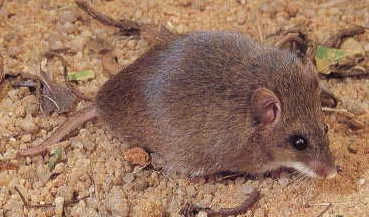

5 notes
·
View notes
Text
Biology, Vol. 13, Pages 264: First Observations of Buzzards (Buteo) as Definitive Hosts of Sarcocystis Parasites Forming Cysts in the Brain Tissues of Rodents in Lithuania
Representatives of the genus Sarcocystis are worldwide distributed apicomplexan parasites characterised by two-host prey-predator relationships. Sarcocystis spp. produce sarcocysts in the muscles and brains of intermediate hosts and develop sporocysts in the intestines of definitive hosts. Two species, Sarcocystis glareoli and Sarcocystis microti, previously assigned to the genus Frenkelia, form cysts in the brains of rodents and are transmitted through the common buzzard (Buteo buteo). In our study, brain samples of 694 small mammals caught in different regions of Lithuania were examined for Sarcocystis spp. Additionally, 10 B. buteo and two rough-legged buzzards (Buteo lagopus) were tested for sporocysts of the analysed parasites. Sarcocystis species were identified based on 28S #rRNA sequence comparison. Of the eleven species of small mammals tested, Sarcocystis parasites were observed only in the bank vole (Clethrionomys glareolus). Cysts of S. glareoli were detected in 34 out of 374 C. glareolus (9.1%, 95% CI = 6.4–12.5%). Molecular investigation showed the presence of only S. glareoli in the intestines of 50% of B. buteo. Furthermore, two species, Sarcocystis sp. Rod3 and Sarcocystis sp. Rod4, were confirmed in B. lagopus. Our results demonstrate the need for further studies on Sarcocystis cycling between rodents and birds. https://www.mdpi.com/2079-7737/13/4/264?utm_source=dlvr.it&utm_medium=tumblr
0 notes
Video
Bank Vole (Clethrionomys glareolus) by Phil Winter
Via Flickr:
#Bank Vole#Clethrionomys glareolus#animals#wildlife#photography#fly agaric#Amanita muscaria#vole#rodent#fungi
61 notes
·
View notes
Video
Bank Vole (Clethrionomys glareolus) by Phil Winter
Via Flickr:
I disturbed this little guy when I went to set up a feeding station in the wood behind my house. I saw him disappear down a hole at the foot of a birch tree. The Fly agaric was on it's side and there were bite marks in it. I stood it up and placed a few sunflower hearts on top which I know they love. I set the camera up at ground level and manually focussed on the top of the fungus. I moved away and fired the camera remotely to take a test shot. I didn't see the vole return but I could see the bracken move. It wasn't long before he poked his head up and gave me a chance of a shot. The bracken framing him was a bonus because it wasn't in the test shot. He must have disturbed it while he was rooting around underneath.
16 notes
·
View notes
Photo

owls-n-elderberries: Bank Vole (Clethrionomys glareolus) by... https://georgianadesign.tumblr.com/post/658105907054592000
0 notes
Text
Take That Back: The Top Scientific Retractions of 2019


“If it disagrees with experiment, it’s wrong. That’s all there is to it.” So stated famous physicist Richard Feynman at a lecture about the scientific approach at Cornell University in 1964.
Feynman seems just half appropriate, though. Yes, one’s proposed theory is incorrect if it does not concur with experiment. However that’s not all there is to it. With negligence or straight-out scams, you can make it appear that your theory is appropriate — and get it released in a top scientific journal.
Usually, such deceptiveness is ultimately found. This previous year was abundant in scientific retractions of documents filled with bad procedures and, oftentimes, outright fabrications. Here are 5 from 2019 that made the news in part due to the fact that they misinform and offer incorrect hope.
5. Creationist’s paper withdrawed ’20 million years’ later

(Image credit: Shutterstock)
God produced the Earth 6,000 years back, according to numerous Christian creationists. And on the 6th day of production, God made 3 types of lumber vole with ribonucleotides that would concern show the imperfections of the theory of development, according to a 1989 paper in the International Journal of Neuroscience.
Russian researcher Dmitrii Kuznetsov, the author of this paper, declared that each of these 3 really carefully associated voles have ribonucleotides — enzymes that are the foundation of DNA and therefore DNA repair work — that are absolutely incompatible throughout the 3 types. This finding supports “the general creationist concept on the problems of the origin of boundless multitudes of different and harmonically functioning forms of life,” Kuznetsov composed in the paper.
But did Kuznetsov break the rule about bearing incorrect witness? Swedish biologist Dan Larhammar, who in 2018 ended up being president of the Royal Swedish Academy of Sciences, questioned Kuznetsov’s findings in a letter to the journal released method back in 1994. As reported in The Scientist in November 2019, Larhammar declared that the outcomes were ostensibly shown which numerous of the recommendations could not be validated, even after he called researchers mentioned in the paper.
The International Journal of Neuroscience concurred with Larhammar and withdrawed the paper, albeit 30 years later on. Kuznetsov has actually been implicated several times of scientific misbehavior, consisting of for his analysis of the Shroud of Turin, which scholars declare come from the Middle Ages however which Kuznetsov recommended might be the 2,000-year-old death shroud of Jesus.
Why the 30-year hold-up for a retraction? Thirty years in a 6,000-year-old Earth would be comparable to 20 million years in a 4-billion-year-old Earth. Perhaps the journal was reluctant to retype the initial title, “In Vitro Studies of Interactions Between Frequent and Unique Mrnas and Cytoplasmic Factors from Brain Tissue of Several Species of Wild Timber Voles of Northern Eurasia, Clethrionomys Glareolus, Clethrionomys Frater and Clethrionomys Gapperi: A New Criticism to a Modern Molecular-Genetic Concept of Biological Evolution.”
4. HPV vaccine vindicated when again

(Image credit: Shutterstock)
The vaccine versus the human papillomavirus (HPV) has the possible to get rid of most cases of cervical cancer around the world and conserve millions of lives. The HPV vaccine can likewise avoid the bulk of vaginal, anal and penile cancers. However that’s just if moms and dads immunize their kids versus HPV.
A growing number are pulling out over worries that the HPV vaccine is damaging. In Japan, for instance, HPV vaccination rates fell from about 70 percent to 1 percent, its existing level, in simply a couple of years after unproven reports of vaccine negative effects, according to research study released this year in the journal Expert Review of Vaccines.
As such, vaccine supporters are hesitant of any brand-new research study professing issues with the HPV vaccine. Gayle DeLong, an associate teacher of economics and financing at Baruch College in New York, found out that rapidly. In 2018, she released a paper in the Journal of Toxicology and Environmental Health, Part A, in which she reported a link in between the HPV vaccine and infertility. Wives in between ages 25 and 29 who had actually gotten the HPV vaccine were less most likely to have actually developed compared to wives who didn’t get the vaccine, DeLong discovered.
The finding was promoted within anti-vaccination circles, however the research study had several analytical imperfections, such as not managing for birth-control usage. Additionally, those ladies who got the vaccine had a greater instructional level. So, it might be that college-educated ladies who had actually gotten the vaccine were postponing giving birth till after age 30, as is the U.S. pattern.
The journal withdrawed the paper in December 2019, keeping in mind “serious flaws in the statistical analysis and interpretation of the data in this paper.” The World Health Organization has actually put the HPV vaccine on its list of necessary medications, right up there with penicillin and acetaminophen, as an indication of its security and effectiveness.
3. What takes place when the scams czar is implicated of scams?

(Image credit: Zhang Daozheng/China News Service/VCG through Getty Images)
On Nov. 13, 2019, Cao Xuetao, one of China’s most popular researchers, talked to his fellow compatriots from the Great Hall of People in Beijing about research study stability. Some 6,000 individuals remained in presence, and the speech was live-streamed to 800,000 university student throughout the large country, compulsory seeing for the majority of.
The subject was a controversial one. Simply a year prior, the Chinese Ministry of Science and Technology (MOST) and a number of other companies had actually promoted a series of punitive steps to be utilized in cases of scientific misbehavior, an indication that the Chinese federal government was thinking about the matter seriously. This had actually been available in the wake of various scientific scandals in China, such as the retraction of more than 100 documents in 2017 over fabricated peer evaluation and information control.
Cao is a previous president of the Chinese Academy of Medical Sciences, existing president of the prominent Nankai University, leader of a number of laboratories and primary research study stability officer for all Chinese research study. His distinctions are numerous. Now, Cao’s actions are drawing close examination, as he has actually been implicated of scientific misbehavior.
As reported on Nov. 22 in the journal Science, a plethora of Cao’s documents appear to have actually doctored images. Science sleuth Elisabeth Bik, based in San Francisco, saw that a number of images from a 2009 paper, in specific, appeared like repeats. Bik has actually outed numerous researchers for information control. Cao’s body of work was quickly inspected; they discovered examples of charts and images seeming duplicated and controlled in lots of documents, which quickly might be withdrawed.
Cao vowed to check out the matter. As kept in mind, he’s the leader of a number of laboratories and has a full-time gig as a university president, and he likely counts on postdoctoral fellows and college students to perform real research study. And they likely wish to please the one in charge with ostensibly excellent outcomes. The exact same would use to other elite researchers in China, which suggests the issue of scientific misbehavior may be tough to root out.
2. Cars And Truck T research study hauled off to the retraction load

(Image credit: Shutterstock)
The cancer research study neighborhood was happy over a research study released in the journal Nature in September 2018 that explained a homing system to provide the effective anti-cancer chimeric antigen receptor (CAR) T cell treatment to brain cancer cells, which have actually long been out of reach to drug treatments.
But the scientists who carried out the research study, from Baylor College of Medicine in Texas, might not have actually crossed the blood–brain barrier, after all, however rather the reality–fiction barrier.
Within a couple of weeks of publication, other researchers started homing in on what might be prevalent image control. Almost every image seemed fudged and not helpful of the underlying information, according to remarks published on a confidential post-publication peer-review site called PubPeer.
The journal Nature examined and withdrawed the paper in February 2019. The credibility of this homing system stays in doubt. Some commenters on PubPeer kept in mind that Nature must have identified the image control throughout the peer-review procedure. Software application exists to find it. It’s either that or anticipate researchers to be sincere.
1. ‘CRISPR Baby’ researcher withdrawed from public view

(Image credit: Shutterstock)
He Jiankui has actually not been seen openly because January 2019, simply a couple of months after he infamously revealed the birth of twin women whose DNA was modified utilizing CRISPR. His strategy was to make the women unsusceptible to HIV infection by customizing a gene understood to use some security versus the infection.
Seemingly happy of his accomplishment, He experienced speedy around the world condemnation — not simply over the secrecy of the experiment however likewise for the possible damage that might have been done to the children, whose genes were controlled while in an embryonic state. CRISPR is an imperfect method that can modify DNA in unidentified and often damaging methods, as animal research studies have actually shown.
The Chinese federal government, which might have supported He’s efforts, has actually because suspended all of his research study activities and, according to the New York Times, has actually kept him under guard.
Not much is learnt about He’s treatment. Here’s what is understood: Scientists have actually mentioned that the standard property of the work — changing a gene called CCR5 to avoid HIV infection — is shortsighted due to the fact that this transformed gene, discovered in nature, does not use consistent HIV security to those individuals who bring it. Additionally, the twins were provided imperfect variations of this transformed gene, and the health repercussions are unidentified, according to investigative work done by MIT Technology Review.
So, this was a speculative research study otherwise ideal just for laboratory animals, clinically unneeded and improperly performed at that. There was a 3rd gene-edited infant, too, possibly born in the summertime of 2019. Absolutely nothing is understood of the infant’s fate.
At concern is germline gene-editing on embryos. Gene change at this early phase guarantees that all genetic engineerings are copied into every cell in the body, consisting of egg and sperm cells, making the modifications inheritable. Otherwise, CRISPR and comparable innovations continue to reveal excellent guarantee in treating hereditary illness in kids and grownups through more separated and restricted gene adjustment.
Originally released on Live Science.
New post published on: https://www.livescience.tech/2020/01/01/take-that-back-the-top-scientific-retractions-of-2019/
0 notes
Text
Postdoc: CzechRepublic.EcolNicheModellingGenomics
Postdoctoral position in modelling species' response to environmental change at the Czech Academy of Sciences. In addition to the previously advertised positions, we are seeking a postdoctoral researcher with expertise in Ecological-Niche Modelling (ENM). The postdoctoral position is available in the group of Petr Kotlik (http://bit.ly/2yI2ABn) at the Institute of Animal Physiology and Genetics of the Czech Academy of Sciences in Libechov (http://bit.ly/2wlGtPK). The successful candidate will combine phylogeographic/genomic data and ENM to investigate the ecological and evolutionary conditions leading to species' persistence under climate/environmental changes. The postdoctoral researcher will be involved in a project identifying postglacial population history and genetic adaptations in response to climate change, using large SNP datasets and a widespread European small mammal - the bank vole (Clethrionomys glareolus) - as the model system. This project is currently in an advanced state, with extensive genomic and distributional data already acquired and data analysis in progress. He/she will closely collaborate with a PhD student who is also assigned to this project and who is conducting genomic data analysis. The project is in collaboration with the lab of Jeremy Searle (Cornell University). Representative publications of related projects from the lab can be found below. The starting date is flexible and can be as early as November 2017. Applications will be accepted until the position is filled. The position is available initially for 1 year, but can be extended depending on progress. The ideal candidates will have a strong publication track record in peer-reviewed journals and a proven expertise in ENM. Previous experience with analysis of genetic/genomic data is not necessary. We seek an individual who is enthusiastic, highly motivated, and willing to work independently as well as in a team. We expect good written and oral communication skills in English for candidates of any nationality. The gross salary of the postdocs is 35.000 CZK/month (ca 1300 EUR), and may increase based on their achievements during the project (note that living expenses in the Czech Republic are generally lower than in Western European countries or the United States). Interested applicants should send a PDF with CV, a brief description of research interests and experience, and contact information for three senior scientists who may provide a reference, to [email protected]. Representative publications: Kotlik et al. (2006) A northern glacial refugium for bank voles (Clethrionomys glareolus). Proc. Natl. Acad. Sci. USA 103, 14860. Searle et al. (2009) The Celtic fringe of Britain: insights from small mammal phylogeography. Proc. R. Soc. B 276, 4287-4294. Kotlik et al. (2014) Adaptive phylogeography: functional divergence between haemoglobins derived from different glacial refugia in the bank vole. Proc. R. Soc. B 281, 20140021. Filipi et al. (2015) Mitogenomic phylogenetics of the bank vole Clethrionomys glareolus, a model system for studying end-glacial colonization of Europe. Mol. Phylogenet. Evol. 82, 245-257. [email protected]
via Gmail
0 notes
Text
The development of the ovary from birth to maturity in the bank vole (Clethrionomys glareolus) and the vole (M
http://dlvr.it/P73Vyp
0 notes
Text
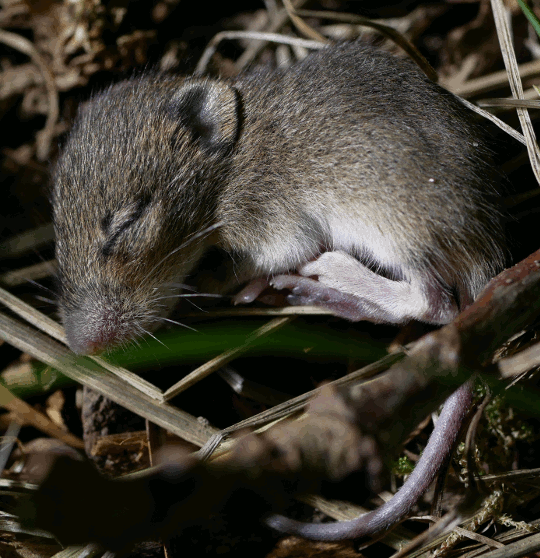
54 notes
·
View notes
Photo
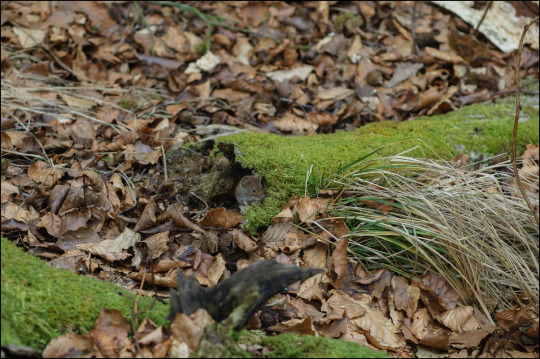



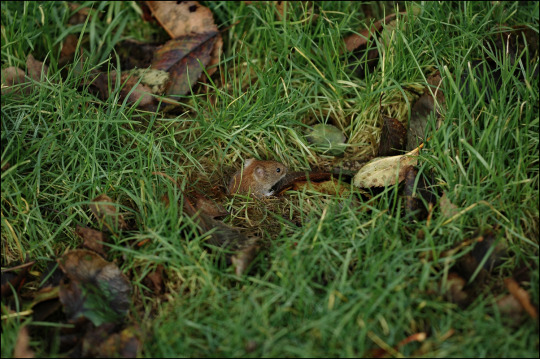
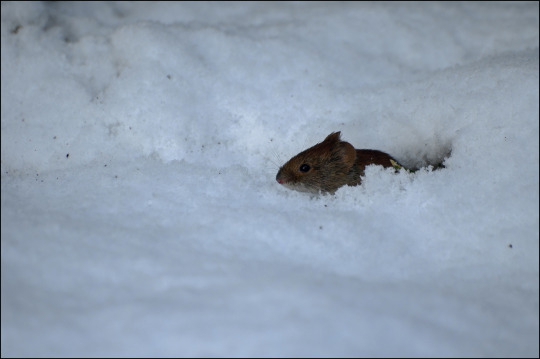
Rødmus (Clethrionomys glareolus)
Denne lille gnaver er meget talrig og almindeligt forekommende i det meste af landet. Den er ofte knyttet til løvskov; men forekommer også i læbælter, parker og ældre haver med en god vegetation af træer og buske. Arten mangler på Bornholm og mange småøer og er desuden meget fåtallig (mangler måske helt) i Thy, Vestjylland og i det vestlige Vendsyssel.
Rødmusen er en studsmus, hvilket betyder, at den kan kendes på sin korte hale, små ører og ret korte ben. Pelsen er rødbrun henover ryggen, mens den på maven er gråhvid. Rødmusen bliver mellem 8 og 14 cm. lang.
Den maximale levealder er halvandet til to år. Arten får typisk 3-4 kuld pr. år, hver med 3-5 unger. Ungerne er kønsmodne og begynder at yngle når de er omkring fem til syv uger gamle. Rødmusen går ikke i vinterdvale, og når fødegrundlaget - især bog og agern - er særligt gunstigt (Oldenår) yngler Rødmusen også i løbet af vinteren.
Færdes man nogenlunde stille gennem løvskoven, vil man kunne nå at opdage rødmusen mellem de visne blade, inden den gemmer sig i en af sine gange i jorden. Når man ved, hvor dyret har gemt sig, er det ofte blot et spørgsmål om at vente - den dukker som regel op igen og fortsætter sin fødesøgning, bare man forholder sig helt i ro.
Har man rødmus i haven, vænner den sig meget hurtigt til, at den kan søge føde under buske og under træer, selv om der er mennesker tilstede. Om vinteren vil sådan en have-rødmus dukke op af sneen for at samle solsikkefrø og andre fødeemner på foderbrættet.
2 notes
·
View notes
Photo

Bank Vole (Clethrionomys glareolus) by Phil Winter
1K notes
·
View notes
Text
Take That Back: The Top Scientific Retractions of 2019


“If it disagrees with experiment, it’s wrong. That’s all there is to it.” So said famed physicist Richard Feynman at a lecture about the scientific method at Cornell University in 1964.
Feynman appears to be only half correct, though. Yes, one’s proposed theory is wrong if it doesn’t agree with experiment. But that’s not all there is to it. With carelessness or outright fraud, you can make it seem that your theory is correct — and get it published in a top scientific journal.
Usually, such deception is eventually discovered. This past year was rich in scientific retractions of papers filled with poor processes and, in many cases, blatant fabrications. Here are five from 2019 that made the news in part because they mislead and provide false hope.
5. Creationist’s paper retracted ’20 million years’ later

(Image credit: Shutterstock)
God created the Earth 6,000 years ago, according to many Christian creationists. And on the sixth day of creation, God made three species of timber vole with ribonucleotides that would come to demonstrate the shortcomings of the theory of evolution, according to a 1989 paper in the International Journal of Neuroscience.
Russian scientist Dmitrii Kuznetsov, the author of this paper, claimed that each of these three very closely related voles have ribonucleotides — enzymes that are the building blocks of DNA and thus DNA repair — that are utterly incompatible across the three species. This finding supports “the general creationist concept on the problems of the origin of boundless multitudes of different and harmonically functioning forms of life,” Kuznetsov wrote in the paper.
But did Kuznetsov break the commandment about bearing false witness? Swedish biologist Dan Larhammar, who in 2018 became president of the Royal Swedish Academy of Sciences, questioned Kuznetsov’s findings in a letter to the journal published way back in 1994. As reported in The Scientist in November 2019, Larhammar claimed that the results were superficially demonstrated and that many of the references couldn’t be verified, even after he contacted scientists cited in the paper.
The International Journal of Neuroscience agreed with Larhammar and retracted the paper, albeit 30 years later. Kuznetsov has been accused multiple times of scientific misconduct, including for his analysis of the Shroud of Turin, which scholars claim originated in the Middle Ages but which Kuznetsov suggested could be the 2,000-year-old death shroud of Jesus.
Why the 30-year delay for a retraction? Thirty years in a 6,000-year-old Earth would be equivalent to 20 million years in a 4-billion-year-old Earth. Maybe the journal was hesitant to retype the original title, “In Vitro Studies of Interactions Between Frequent and Unique Mrnas and Cytoplasmic Factors from Brain Tissue of Several Species of Wild Timber Voles of Northern Eurasia, Clethrionomys Glareolus, Clethrionomys Frater and Clethrionomys Gapperi: A New Criticism to a Modern Molecular-Genetic Concept of Biological Evolution.”
4. HPV vaccine vindicated once again

(Image credit: Shutterstock)
The vaccine against the human papillomavirus (HPV) has the potential to eliminate most cases of cervical cancer worldwide and save millions of lives. The HPV vaccine can also prevent the majority of vaginal, anal and penile cancers. But that’s only if parents vaccinate their children against HPV.
A growing number are opting out over fears that the HPV vaccine is harmful. In Japan, for example, HPV vaccination rates fell from about 70 percent to 1 percent, its current level, in just a few years after unfounded reports of vaccine side effects, according to research published this year in the journal Expert Review of Vaccines.
As such, vaccine proponents are skeptical of any new study purporting problems with the HPV vaccine. Gayle DeLong, an associate professor of economics and finance at Baruch College in New York, learned that quickly. In 2018, she published a paper in the Journal of Toxicology and Environmental Health, Part A, in which she reported a link between the HPV vaccine and infertility. Married women between ages 25 and 29 who had received the HPV vaccine were less likely to have conceived compared with married women who didn’t receive the vaccine, DeLong found.
The finding was promoted within anti-vaccination circles, but the study had multiple statistical shortcomings, such as not controlling for birth-control use. Moreover, those women who received the vaccine had a higher educational level. So, it could be that college-educated women who had received the vaccine were delaying childbirth until after age 30, as is the U.S. trend.
The journal retracted the paper in December 2019, noting “serious flaws in the statistical analysis and interpretation of the data in this paper.” The World Health Organization has placed the HPV vaccine on its list of essential medicines, right up there with penicillin and acetaminophen, as a sign of its safety and efficacy.
3. What happens when the fraud czar is accused of fraud?

(Image credit: Zhang Daozheng/China News Service/VCG via Getty Images)
On Nov. 13, 2019, Cao Xuetao, one of China’s most prominent scientists, spoke to his fellow countrymen from the Great Hall of People in Beijing about research integrity. Some 6,000 people were in attendance, and the speech was live-streamed to 800,000 college students across the vast nation, mandatory viewing for most.
The topic was a contentious one. Just a year prior, the Chinese Ministry of Science and Technology (MOST) and several other agencies had promulgated a series of punitive measures to be used in cases of scientific misconduct, a sign that the Chinese government was considering the matter seriously. This had come in the wake of numerous scientific scandals in China, such as the retraction of more than 100 papers in 2017 over faked peer review and data manipulation.
Cao is a former president of the Chinese Academy of Medical Sciences, current president of the prestigious Nankai University, leader of several labs and chief research integrity officer for all Chinese research. His accolades are many. But now, Cao’s actions are drawing close scrutiny, as he has been accused of scientific misconduct.
As reported on Nov. 22 in the journal Science, a multitude of Cao’s papers appear to have doctored images. Science sleuth Elisabeth Bik, based in San Francisco, noticed that several images from a 2009 paper, in particular, looked like repeats. Bik has outed many scientists for data manipulation. Cao’s body of work was soon scrutinized; they found examples of charts and images appearing to be repeated and manipulated in dozens of papers, which soon may be retracted.
Cao pledged to look into the matter. As noted, he’s the leader of several labs and has a full-time gig as a university president, and he likely relies on postdoctoral fellows and graduate students to conduct actual research. And they likely want to please the boss with superficially good results. The same would apply to other elite scientists in China, which means the problem of scientific misconduct might be difficult to root out.
2. CAR T study carted off to the retraction heap

(Image credit: Shutterstock)
The cancer research community was ecstatic over a study published in the journal Nature in September 2018 that described a homing system to deliver the powerful anti-cancer chimeric antigen receptor (CAR) T cell therapy to brain cancer cells, which have long been out of reach to drug therapies.
But the researchers who conducted the study, from Baylor College of Medicine in Texas, may not have crossed the blood–brain barrier, after all, but rather the fact–fiction barrier.
Within a few weeks of publication, other scientists began homing in on what may be widespread image manipulation. Nearly every image appeared to be fudged and not supportive of the underlying data, according to comments posted on an anonymous post-publication peer-review website called PubPeer.
The journal Nature investigated and retracted the paper in February 2019. The validity of this homing system remains in doubt. Some commenters on PubPeer noted that Nature should have spotted the image manipulation during the peer-review process. Software exists to detect it. It’s either that or expect scientists to be honest.
1. ‘CRISPR Baby’ scientist retracted from public view

(Image credit: Shutterstock)
He Jiankui has not been seen publicly since January 2019, just a few months after he infamously announced the birth of twin girls whose DNA was edited using CRISPR. His plan was to make the girls immune to HIV infection by modifying a gene known to offer some protection against the virus.
Seemingly proud of his achievement, He encountered swift worldwide condemnation — not merely over the secrecy of the experiment but also for the possible harm that could have been done to the babies, whose genes were manipulated while in an embryonic state. CRISPR is an imperfect technique that can alter DNA in unknown and sometimes harmful ways, as animal studies have demonstrated.
The Chinese government, which may have supported He’s efforts, has since suspended all of his research activities and, according to the New York Times, has kept him under guard.
Not much is known about He’s procedure. Here’s what is known: Scientists have stated that the basic premise of the work — altering a gene called CCR5 to prevent HIV infection — is shortsighted because this altered gene, found in nature, does not offer uniform HIV protection to those people who carry it. Moreover, the twins were given imperfect versions of this altered gene, and the health consequences are unknown, according to investigative work done by MIT Technology Review.
So, this was an experimental study otherwise suitable only for lab animals, medically unnecessary and poorly executed at that. There was a third gene-edited baby, too, perhaps born in the summer of 2019. Nothing is known of the baby’s fate.
At issue is germline gene-editing on embryos. Gene alteration at this early stage ensures that all genetic modifications are copied into every cell in the body, including egg and sperm cells, making the changes inheritable. Otherwise, CRISPR and similar technologies continue to show great promise in curing genetic diseases in children and adults through more isolated and limited gene modification.
Originally published on Live Science.
New post published on: https://www.livescience.tech/2020/01/01/take-that-back-the-top-scientific-retractions-of-2019/
0 notes
Text
Postdoc: CzechRepublic.GenomicsBiochemistryAdaptation
Postdoctoral positions in population genomics and biochemistry of oxidation stress response at the Czech Academy of Sciences. Two postdoctoral positions are available with Petr Kotlik (http://bit.ly/2yI2ABn) at the Institute of Animal Physiology and Genetics of the Czech Academy of Sciences in Libechov (http://bit.ly/2wlGtPK) to join a group of investigators studying microevolutionary response to climate change using a widespread European small mammal - the bank vole (Clethrionomys glareolus) - as the model system. Research areas include (1) identifying postglacial population history and genetic adaptations in response to climate change, using large SNP datasets and genomic data, and (2) identifying how the difference in the resistance to oxidative stress conferred by haemoglobin contributes to the adaptation of bank vole populations to varied environmental conditions. Research projects will be aligned with the interests of the successful candidates. Representative publications of related projects from the lab can be found below. The relevant projects are in collaboration with the lab of Jeremy Searle (Cornell University). The starting date is flexible and can be as early as November 2017. Applications will be accepted until the positions are filled. The positions are available for up to four years. The ideal candidates will have a strong publication track record in peer-reviewed journals and a background in, respectively, population genetics/genomics and biochemistry/oxidative stress biology. We seek individuals who are enthusiastic, highly motivated, and willing to work independently as well as in a team. We expect good written and oral communication skills in English for candidates of any nationality. The gross salary of the postdocs is 35.000 CZK/month (ca 1300 EUR), and may increase based on their achievements during the project (note that living expenses in the Czech Republic are generally lower than in Western European countries or the United States). Interested applicants should send a PDF with CV, a brief description of research interests and experience, and contact information for three senior scientists who may provide a reference, to [email protected]. Representative publications: Kotlik et al. (2014) Adaptive phylogeography: functional divergence between haemoglobins derived from different glacial refugia in the bank vole. Proc. R. Soc. B 281, 20140021. Searle et al. (2009) The Celtic fringe of Britain: insights from small mammal phylogeography. Proc. R. Soc. B 276, 4287-4294. Filipi et al. (2015) Mitogenomic phylogenetics of the bank vole Clethrionomys glareolus, a model system for studying end-glacial colonization of Europe. Mol. Phylogenet. Evol. 82, 245-257. Kotlik et al. (2006) A northern glacial refugium for bank voles (Clethrionomys glareolus). Proc. Natl. Acad. Sci. USA 103, 14860. [email protected]
via Gmail
0 notes